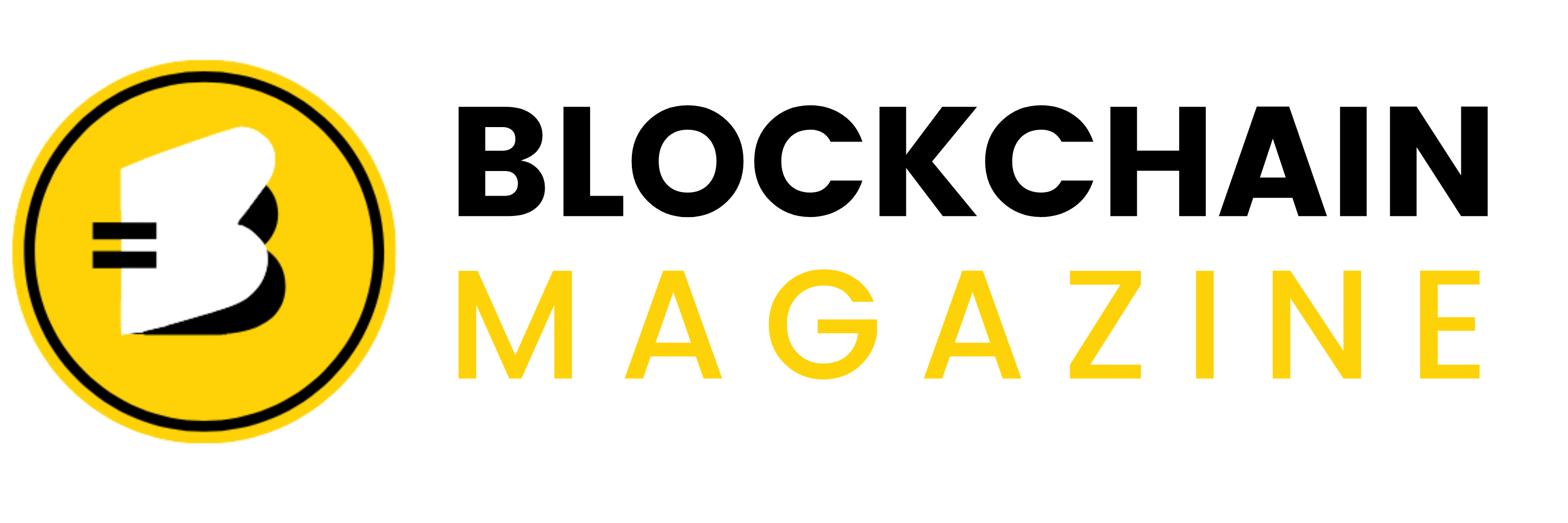How Tether Crypto (USDT) Became the Backbone of the Stablecoin Market Across Different Chains? Top Use Cases
Ever wonder why Tether, or USDT, is such a big deal in the crypto world? It’s not just another stablecoin; it’s like the glue holding the whole system together. With its massive market cap and being one of the most traded cryptos, USDT is everywhere. But what makes it tick? Let’s dive into its role as a backbone in the stablecoin market and check out its top uses.
Key Takeaways
- USDT leads the stablecoin market with unmatched trading volumes and liquidity.
- Its integration across multiple blockchains like Ethereum and Binance Smart Chain makes it super accessible.
- Every USDT token is backed by real-world assets, ensuring trust and reliability.
- USDT simplifies cross-border payments, offering a cheaper and faster alternative to traditional banking.
- It’s a key player in decentralized finance, providing essential liquidity for trading and lending.
1. USDT’s Dominance in The Market
USDT, also known as Tether, isn’t just another stablecoin; it’s the cornerstone of the cryptocurrency market. As of December 2023, USDT reached an all-time high market cap of $140 billion, highlighting its significant influence. Currently, it holds a market cap of $139.4 billion, showcasing its resilience and dominance.
Why is USDT so dominant?
- Unmatched Liquidity: USDT consistently tops trading volume charts, making it a go-to stablecoin for both individual traders and large institutions.
- Multi-Chain Integration: USDT operates across various blockchains, including Ethereum and Binance Smart Chain, ensuring broad accessibility and seamless liquidity.
- Backed by Real Assets: Each USDT token is fully backed by reserves, such as cash and short-term investments, with regular transparency reports reinforcing trust.
USDT’s role in the crypto market is undeniable. It acts as a bridge, allowing users to navigate the volatile crypto seas with a stable asset.
USDT’s dominance isn’t just about numbers; it’s about trust and reliability. It provides a stable store of value, especially vital during market volatility, and simplifies cross-border transactions with lower fees and faster speeds compared to traditional banking systems. As the stablecoin market continues to grow, USDT remains at the forefront, driving innovation and stability.
2. Unmatched Liquidity
When it comes to the world of stablecoins, USDT stands out as a liquidity powerhouse. This means that whether you’re a trader, an investor, or just someone dabbling in crypto, you can rely on USDT to be available when you need it. Let’s break down why this is so important.
- High Trading Volumes: USDT consistently leads in trading volumes. It’s not just popular; it’s essential. With daily trading surpassing billions, it ensures that there’s always someone to trade with, making it a favorite among traders.
- Wide Acceptance: From major exchanges like Binance to smaller platforms, USDT is everywhere. This wide acceptance means you can easily move your assets around without worrying about liquidity issues.
- Stable Value: As a stablecoin, USDT maintains its value close to the dollar, which is crucial during volatile market swings. This stability allows traders to quickly enter and exit positions without losing value.
USDT’s role in the crypto market is like the oil in an engine—it’s not flashy, but without it, things just don’t run smoothly.
In a strategic move, Bybit is transitioning its options platform to Tether (USDT), enhancing liquidity and ceasing new USDC-settled contracts after February 26. This shift underscores the growing reliance on USDT’s liquidity capabilities across platforms.
These factors combined make USDT an unmatched force in the stablecoin market, providing the liquidity that keeps the crypto ecosystem thriving.
3. Multi-Chain Integration
USDT’s ability to operate across multiple blockchain networks is a game-changer in the crypto world. This multi-chain integration enhances liquidity and accessibility, making it a preferred stablecoin choice for users and developers alike.
USDT is not confined to a single blockchain. It moves seamlessly across various chains like Ethereum, Tron, and Binance Smart Chain. This flexibility allows users to choose the network that best suits their needs, whether it’s for lower transaction fees or faster transaction speeds.
Benefits of Multi-Chain Support
- Increased Accessibility: Users can hold and transfer USDT on their preferred blockchain, providing greater flexibility.
- Cost Efficiency: By choosing chains with lower fees, users can save on transaction costs.
- Network Resilience: Operating on multiple chains reduces reliance on any single network, enhancing stability.
USDT’s integration across different chains means that it can serve as a bridge, connecting diverse blockchain ecosystems and facilitating smoother transactions.
Moreover, with the introduction of systems like the Legacy Mesh, Tether is working to further enhance USDT’s connectivity across networks, eliminating the need for bridges and simplifying cross-chain transactions. This innovation not only improves the user experience but also strengthens USDT’s position as a versatile and reliable stablecoin in the market.
4. Backed By Real Assets
Tether’s USDT is a stablecoin that’s pegged to real-world assets, ensuring it maintains a steady value in the volatile crypto environment. Each USDT token is fully backed 1:1 by reserves, which include cash and short-term investments. This backing mechanism is crucial in providing a less volatile alternative to traditional cryptocurrencies.
The Mechanics of Reserve Backing
The reserves supporting USDT are composed of a mix of cash, U.S. Treasury bonds, Bitcoin, and gold. This diverse composition serves multiple purposes:
- Maintaining the Dollar Peg: The reserves include a high percentage of cash equivalents, allowing for quick liquidation if large-scale redemptions occur.
- Ensuring Liquidity: The reserve composition enables Tether to process significant redemptions, having handled billions during market downturns.
- Generating Revenue: By diversifying its assets, Tether not only maintains stability but also generates returns, which helps sustain its operations.
Reserve Management Challenges
Managing these reserves isn’t without its challenges. Tether must maintain a 1:1 ratio of reserves with liquid and stable assets, as required by regulations. This involves a careful balance between liquidity, stability, and profitability, especially given USDT’s massive market presence and daily transaction volumes.
The ability of USDT to maintain its peg and liquidity is a testament to its robust reserve management, despite the complexities involved.
Transparency and Trust
Regular transparency reports are released to reinforce trust and reliability among users. These reports detail the composition of Tether’s reserves, ensuring that each USDT is indeed backed by real assets, thus maintaining user confidence.
In conclusion, the backing by real assets is what makes Tether’s USDt a cornerstone in the stablecoin market. It ensures that USDT remains a reliable option for traders and businesses alike, providing stability in a rapidly changing financial landscape.
5. Stable Store Of Value
Stablecoins like USDT have carved a niche as a reliable store of value in the volatile crypto market. USDT stands out because it maintains a 1:1 peg with the U.S. dollar, offering a stable alternative to traditional cryptocurrencies. This stability makes it an attractive option for individuals and businesses looking to preserve value without worrying about sudden price swings.
In regions plagued by economic instability, stablecoins serve as a hedge against inflation and currency devaluation. People use USDT to safeguard their wealth, ensuring that their purchasing power remains intact despite local economic challenges. This has become particularly crucial in countries where the national currency is prone to rapid devaluation.
Moreover, USDT’s role as a stable store of value extends to the digital realm, where it is used in various financial applications. From being a medium of exchange on cryptocurrency exchanges to acting as collateral in decentralized finance (DeFi) platforms, USDT provides a consistent value reference that supports a wide range of transactions.
In a world where economic uncertainties are commonplace, USDT offers a semblance of financial security, bridging the gap between traditional finance and the digital economy.
USDT’s ability to maintain stability while being easily transferable across borders is a game-changer. It allows users to move funds quickly and efficiently, bypassing the often slow and costly processes associated with traditional banking systems. As a result, USDT is increasingly being adopted for everyday transactions, from buying goods and services to facilitating international remittances.
To sum up, USDT’s stable value proposition is not just about maintaining a consistent price; it’s about providing a reliable and accessible financial tool in an ever-changing economic landscape. Its growing integration into various financial systems underscores its importance as a stable store of value in the modern world.
6. Cross-Border Payments
In today’s global economy, sending money across borders is a necessity for many individuals and businesses. Traditional methods, however, often come with high fees and slow processing times. This is where stablecoins like USDT step in, offering a faster and more cost-effective solution. USDT’s stable value and quick transaction times make it an ideal choice for cross-border payments.
Stablecoins eliminate the need for intermediaries, which significantly reduces transaction costs. For instance, sending a $200 remittance from Sub-Saharan Africa using stablecoins is about 60% cheaper than traditional methods. This affordability opens up new possibilities for people who rely on remittances to support their families.
Moreover, the speed of transactions with stablecoins is a game-changer. Unlike traditional banking systems that can take days to process international payments, stablecoin transactions are often completed in minutes. This efficiency is especially beneficial for businesses needing to settle international invoices promptly.
The adoption of stablecoins for cross-border payments is transforming how we think about moving money globally. It’s not just about cutting costs; it’s about creating a more inclusive financial system.
In summary, stablecoins like USDT are not only reducing friction in cross-border transactions but also enhancing financial inclusion by providing a reliable and accessible means of transferring funds across borders. This is just one of the many ways USDT is reshaping the financial landscape.
7. Peer-To-Peer Transactions
Stablecoins like USDT have reshaped the landscape of peer-to-peer (P2P) transactions. With their ability to facilitate quick and low-cost transfers, they stand out as a preferred choice for many users. People are increasingly turning to stablecoins for everyday payments, largely because these transactions bypass traditional banking systems, which often come with hefty fees and slow processing times.
Why USDT for P2P?
- Speed: Transactions are processed almost instantly, making it ideal for urgent transfers.
- Cost-Effectiveness: Minimal fees compared to traditional banks.
- Accessibility: Especially valuable in regions with limited banking infrastructure.
How It Works
- Initiate a Transfer: Start by entering the recipient’s wallet address.
- Specify Amount: Enter the amount of USDT you wish to send.
- Confirm and Send: Double-check details and confirm the transfer.
The simplicity of using USDT for P2P transactions provides a level of financial freedom that was previously hard to achieve.
Real-World Impact
- Financial Inclusion: Offers a solution for the unbanked and underbanked populations.
- Reduced Barriers: No need for a bank account, just a digital wallet.
- Global Reach: Facilitates cross-border transfers without the usual hassles.
Incorporating stablecoins into P2P transactions is becoming more common as people appreciate their efficiency and reliability. This trend is not just a tech-savvy shift; it’s a practical move towards more accessible and democratized financial systems.
8. Decentralized Finance
In the rapidly evolving world of decentralized finance (DeFi), USDT has carved out a significant role. As a stablecoin, USDT provides the stability needed in a volatile crypto market, making it a favorite for DeFi applications. This stability is crucial for users who want to engage in financial activities without the wild price swings seen in other cryptocurrencies.
Lending and Borrowing
USDT’s stable value makes it an ideal candidate for lending and borrowing platforms. Users can lend their USDT to others and earn interest, or they can borrow it to leverage their investments. This process is often facilitated by smart contracts, which automate the lending and borrowing processes, ensuring transparency and efficiency.
Liquidity Pools
In DeFi, liquidity pools are essential for facilitating trades on decentralized exchanges. USDT is frequently used in these pools because its stable value reduces the risk of impermanent loss, a common issue faced by liquidity providers. By contributing USDT to a liquidity pool, users can earn a share of the transaction fees generated by the pool.
Staking
Staking USDT in DeFi protocols allows users to earn rewards, often in the form of interest or governance tokens. This incentivizes users to hold onto their USDT, providing stability and liquidity to the DeFi ecosystem.
The use of USDT in DeFi highlights its importance in providing a stable and reliable currency for decentralized financial activities. As the DeFi space continues to grow, USDT’s role is likely to expand, offering more opportunities for users to engage in innovative financial practices.
In summary, USDT’s integration into DeFi platforms for lending, liquidity mining, and staking underscores its importance in the ecosystem. Its stability, combined with the efficiencies of blockchain technology, makes it a cornerstone of decentralized financial activities.
9. Risk Hedging
In the unpredictable world of cryptocurrency, USDT plays a significant role in risk management. This stablecoin offers a refuge for traders and investors looking to secure their assets against the volatile swings of the crypto market.
Key Benefits of Using USDT for Risk Hedging
- Price Stability: Unlike other cryptocurrencies, USDT’s value is pegged to the US dollar, providing a stable option for investors during market turbulence.
- Liquidity: With its widespread acceptance across various exchanges, USDT offers unmatched liquidity, allowing for quick entry and exit from positions.
- Diversification: Holding USDT can diversify a crypto portfolio, reducing exposure to market downturns.
USDT’s ability to maintain a stable value makes it an essential tool for those navigating the unpredictable waters of cryptocurrency.
However, it’s not all smooth sailing. Holding USDT carries risks, particularly the potential loss of capital from depegging events, where the value of USDT may diverge from its intended peg to the US dollar. Investors should be aware of these risks when considering USDT as a safe investment.
Practical Applications
- Safe Haven: During market downturns, traders often convert their assets into USDT to preserve their value.
- Arbitrage Opportunities: Traders can exploit price differences across exchanges using USDT, taking advantage of its stable value.
- Cross-Market Trading: USDT facilitates trading across different crypto exchanges, offering a stable medium to transfer value.
10. Arbitrage Opportunities
Arbitrage in the world of cryptocurrencies, especially with stablecoins like USDT, offers some interesting opportunities for traders. The ability to buy low on one exchange and sell high on another can be quite profitable. USDT’s wide acceptance across numerous platforms makes it a prime candidate for such strategies.
How Arbitrage Works
Arbitrage involves taking advantage of price differences for the same asset in different markets. For example, if USDT is priced lower on Exchange A than on Exchange B, a trader could buy USDT on Exchange A and sell it on Exchange B for a profit. This process is not only limited to different exchanges but can also occur across different trading pairs within the same exchange.
Key Considerations
- Transaction Fees: Always consider the fees associated with transferring and trading USDT. High fees can eat into potential profits.
- Market Volatility: While USDT is stable, the markets it trades in can be volatile, affecting potential gains.
- Timing: Speed is crucial. Price differences can disappear quickly, so timing your trades is essential.
Tools for Arbitrage
Several tools can help traders spot arbitrage opportunities. Platforms that offer real-time price comparisons across exchanges are invaluable. This guide explores the impact of stablecoins on cross-exchange arbitrage, detailing effective tools and strategies for 2024.
Arbitrage isn’t just about making quick profits; it’s about understanding market dynamics and acting swiftly. The opportunities are there, but only for those who can move fast and manage risks effectively.
In conclusion, while arbitrage with USDT can be profitable, it requires a careful approach. By considering transaction fees, market volatility, and timing, traders can capitalize on these opportunities effectively.
Wrapping It Up: USDT’s Role in the Stablecoin World
So, there you have it. USDT has really carved out a niche for itself in the world of stablecoins. It’s not just another digital currency; it’s become a key player across different blockchains. Why? Well, its liquidity and multi-chain integration make it super handy for traders and businesses alike. Whether you’re looking to hedge your bets in a volatile market or need a reliable way to handle cross-border payments, USDT’s got your back. And let’s not forget, it’s backed by real assets, which gives it a layer of trust that many other cryptocurrencies just don’t have. As we move forward, it’s clear that USDT will continue to be a major force in the crypto world, adapting and growing with the market’s needs. It’s like the Swiss Army knife of stablecoins—versatile, reliable, and always ready to go.
Frequently Asked Questions
What is USDT and why is it important?
USDT, or Tether, is a popular stablecoin that acts like digital money. It’s important because it keeps its value stable, making it useful for trading and protecting against price changes in the crypto world.
How does USDT maintain its value?
USDT keeps its value stable by being backed by real assets like cash and short-term investments. This backing ensures that each USDT is equal to one US dollar.
Why is USDT widely used in crypto trading?
USDT is widely used because it offers unmatched liquidity, meaning it can be easily traded or exchanged. This makes it a favorite among traders and businesses for quick and reliable transactions.
Can USDT be used across different blockchains?
Yes, USDT is integrated with multiple blockchains such as Ethereum and Binance Smart Chain. This makes it flexible and accessible for users on various platforms.
What are some common uses for USDT?
USDT is commonly used for cross-border payments, peer-to-peer transactions, and as a stable store of value. It’s also essential in decentralized finance (DeFi) for trading and as collateral.
Is USDT safe to use?
USDT is considered safe due to its backing by real assets and regular transparency reports. However, it’s always wise to stay informed about any updates or changes in the crypto market.
Stay informed with daily updates from Blockchain Magazine on Google News. Click here to follow us and mark as favorite: [Blockchain Magazine on Google News].
Get Blockchain Insights In Inbox
Stay ahead of the curve with expert analysis and market updates.
latest from tech
Disclaimer: Any post shared by a third-party agency are sponsored and Blockchain Magazine has no views on any such posts. The views and opinions expressed in this post are those of the clients and do not necessarily reflect the official policy or position of Blockchain Magazine. The information provided in this post is for informational purposes only and should not be considered as financial, investment, or professional advice. Blockchain Magazine does not endorse or promote any specific products, services, or companies mentioned in this posts. Readers are encouraged to conduct their own research and consult with a qualified professional before making any financial decisions. The featured image used is just a creative depiction of the title and it does not intend to hurt sentiments of any person or institution. If it hurts anyone sentiments, please do not hesitate to reach out to Blockchain Magazine.

 Bitcoin
Bitcoin  Ethereum
Ethereum  XRP
XRP  Tether
Tether  Solana
Solana  USDC
USDC  Dogecoin
Dogecoin  Cardano
Cardano  Lido Staked Ether
Lido Staked Ether  TRON
TRON  Wrapped Bitcoin
Wrapped Bitcoin  Chainlink
Chainlink  Wrapped stETH
Wrapped stETH  Avalanche
Avalanche  Sui
Sui  Stellar
Stellar  Litecoin
Litecoin  Toncoin
Toncoin  Shiba Inu
Shiba Inu  LEO Token
LEO Token  Hedera
Hedera  USDS
USDS  Hyperliquid
Hyperliquid  Polkadot
Polkadot  WETH
WETH  MANTRA
MANTRA  Bitcoin Cash
Bitcoin Cash  Bitget Token
Bitget Token  Ethena USDe
Ethena USDe  Wrapped eETH
Wrapped eETH  Uniswap
Uniswap  Monero
Monero  NEAR Protocol
NEAR Protocol  Pepe
Pepe  WhiteBIT Coin
WhiteBIT Coin  Bittensor
Bittensor  Ondo
Ondo  Aave
Aave  Aptos
Aptos  Dai
Dai  Internet Computer
Internet Computer  Official Trump
Official Trump  Mantle
Mantle  Ethereum Classic
Ethereum Classic  Tokenize Xchange
Tokenize Xchange  OKB
OKB  Gate
Gate  sUSDS
sUSDS  Coinbase Wrapped BTC
Coinbase Wrapped BTC 




